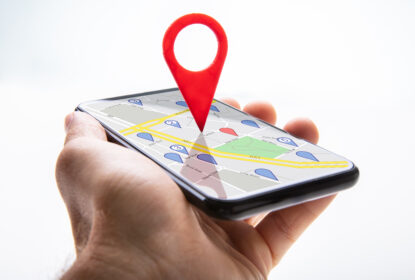The world of marketing has always been evolving, changing as society and technology advances. However, it has never changed at this rate, and so drastically, as it has since the start of the new millennium. Technology has pushed the boundaries for how businesses can reach consumers, eliminating any restrictions they may have had in the past.
The internet is arguably the greatest force behind the change in marketing and the creation of digital advertising. For years, retailers, brands, and marketers relied on traditional forms of marketing to reach potential customers. While this has been great for many businesses as it has allowed them to reach a larger audience, it has made it that much more difficult to retain consumers.
In the past, retailers found it much easier to retain loyal customers. However, that has changed greatly, as 48% of shoppers admitted that they would consider shopping from new retailers over the holiday season. Nearly half of all shoppers are open to looking elsewhere for products. Every business has a shot of attracting any customer, but every business has the potential to lose just as many customers.
This has led to the relationship between retailers and brands becoming strained. The fact that so many customers are willing to explore new retailers makes it difficult for brands to succeed. So, what can retailers and brands do to improve this issue?
The Power of Co-Op Advertising
The partnership between retailers and brands has to strengthen in order to overcome the obstacle that both parties currently face. How do they attract customers to places where they can shop? Even more, how can they allocate their resources to all of their partners to ensure success?
In the past, brands would use offline marketing, such as radio, TV spots, and ads in newspapers to create demand for their products. Then, retailers would use displays, mailers, and more to direct that demand in-store. However, as technology has improved and, in turn, marketing, this way of business is no longer viable.
Consumers have turned to the internet to do the majority of their shopping. The internet has broken up the way retailers and brands have partnered up. Now, they must reestablish a much closer partnership, developing and deploying new marketing strategies to increase sales.
What is Co-Op Advertising?
Cooperative advertising, commonly referred to as co-op advertising, has been around for nearly 100 years. It’s a system between retailers and brands where brands provide partial funding for retailer’s advertising. As we mentioned earlier, a lot of this would go into traditional forms of advertising, such as TV, radio, and newspapers. Today, the majority of consumers do their shopping online. While, at first glance, this wouldn’t seem like an issue, it becomes one when you learn that most co-op funds still primarily go towards offline marketing.
Furthermore, a poll found that about 76% of American adults shop online. With such a large number of shoppers conducting their business online, it becomes even more confusing why these co-op funds are not allocated to digital advertising. However, the answer is actually rather simple. Retail partners just don’t understand digital marketing.
According to MIT SMR Connections research, 50% of retail partners admitted that they didn’t understand digital marketing. They are learning, however, just not at a rate that helps their partnerships with brands.
Much of this misunderstanding happens to come from a lack of technology. Even if retailers were to move some of their funds into digital advertising, they don’t have the technology needed for advertising to properly analyze the data and insights they are receiving. It isn’t in most retailer’s DNA to understand and use online data and analytics, so they haven’t committed to digital advertising. This change in direction has been a hard shift for many retailers.
Brands have begun to realize that they aren’t getting what they expect back out of their partnerships. They are given very little metrics to understand how retailers are using these funds, so brands have begun making a push for more data sharing.
Data Sharing
Many brands have their own direct-to-consumer portion of their business. In these areas, they can see a plethora of marketing metrics within these channels. They are better able to understand what works and what doesn’t to improve their overall profit. They are beginning to expect to see these same metrics from their co-op partners.
The key to a strong brand-retail relationship is an understanding of what both partner’s objectives and goals are. This allows partners to work together better. There are ad solutions available to retailers, as well.
Shopping campaigns with partners present retailers the opportunity to make more efficient and lucrative partnerships with brands. Through Shopping, they can receive better returns and see a multitude of performance metrics on how campaigns are doing. This helps bridge the gap between the two by sharing information between them.
Retailers can share how their partnership with a brand is doing through analytics, while brands can gain a better understanding of how their investments are leading to sales.
When retailers are more forthcoming with data and share the results with their partners, brands feel more comfortable to build a stronger relationship. The transparency they are shown gives them more confidence in their partnership, encouraging them to commit more.
As technology continues to advance, so does the world of marketing. Digital advertising has firmly taken its place as the go-to for many marketers. This shift in marketing has begun to hurt many retailer-brand partnerships. However, it has become increasingly apparent that when retailers are transparent with their partners, it will not only add value to their strategies but also land them more funding from their brand partners for their co-op campaigns.










